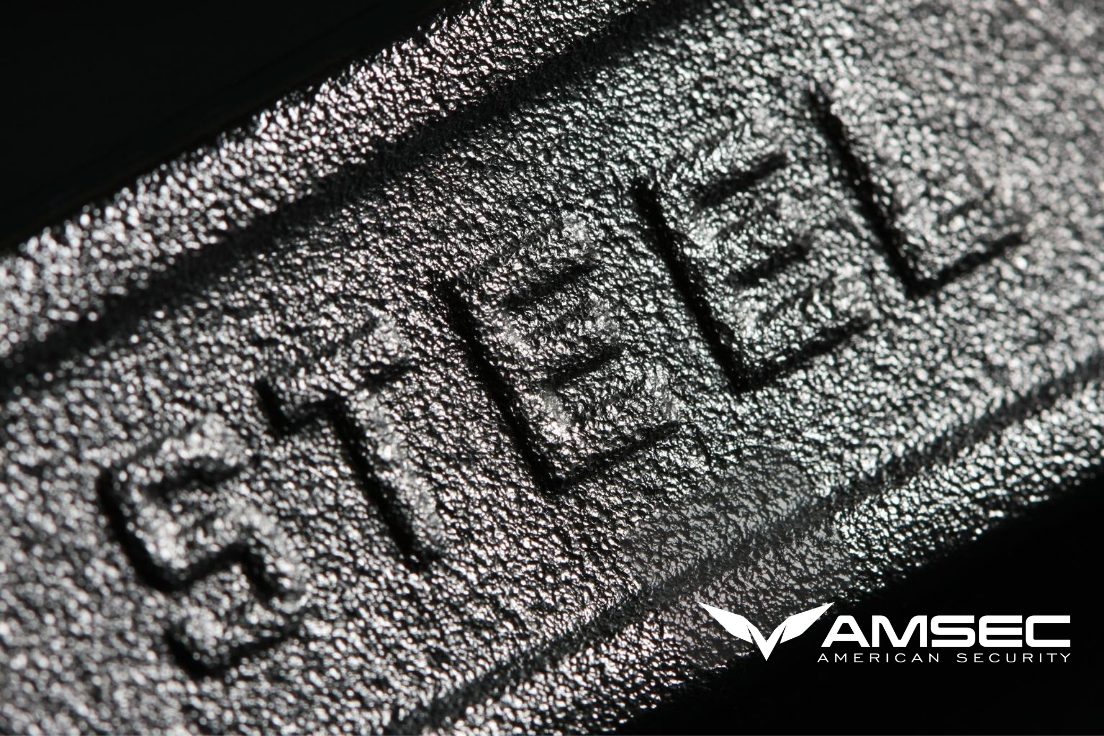Humanity has been using steel in one form or another for well over 4,000 years. The ancient Egyptians made steel from meteorites that fell to earth. Flash forward a few thousand years, and tribesmen in the Near East discovered that it could be mined from subterranean deposits.
Over time, we learned how to create stronger and more durable steel that was first turned into daggers and swords, and more recently, into the everyday products that make modern-day living possible.
What is Steel?
Steel is created when iron and carbon are combined with small amounts of oxygen, sulfur, silicon, and phosphorus. It’s one of the most widely used metals in this day and age and powers many aspects of our daily lives. Refrigerators, cars, surgical scalpels, and even safes would not be possible without the invention of steel.
How’s it Made?
There are two main ways to create steel: electric arc furnace (EAF) and the blast furnace-basic oxygen furnace (BF-BOF). There are several other methods used to develop particular types of steel, which we won’t cover in this blog post.
The difference between the two production methods is the materials that they use. For example, the EAF method uses electricity and recycled steel. The BF-BOF method uses coal, iron ore, and recycled steel. Around 70% of all steel is created by the BF-BOF method.
Types of Steel
Steel is often categorized into four main groups—Stainless, Alloy, Carbon, and Tool. Each category of steel is created by adding other elements such as chromium, nickel, copper, or tungsten. These four categories are:
- Stainless – Stainless steel, like the ones found in your metal kitchen utensils, contains anywhere between 10-20% of chromium as it helps prevent corrosion.
- Alloy – Alloy steels contain various mixtures of aluminum, chromium, copper, and nickel. The addition of specific amounts of these elements can influence the machinability, corrosion resistance, strength, and ductility of the final steel.
- Carbon – Carbon steel contains iron and carbon and trace amounts of other elements. This is the most common steel produced and makes up for 90% of all the steel created. Carbon steel is further broken down into three subcategories: low, mid, and high—with each containing a higher or lower percentage of carbon.
- Tool Steel – Tool steel is comprised of molybdenum, vanadium, cobalt, and tungsten to create a very tough metal that’s used in drilling and cutting equipment. They can also increase durability and heat resistance.
Grades of Steel
The ASTM Grading System is used to classify each type of steel by a grade. Each metal is assigned a letter prefix that’s based on its overall category. For example, the letter “A” is used for steel and iron materials.
Believe it or not, there are over 3,500 different grades of steel that each have unique properties that are very specific to their application, such as scientific instruments, airplane parts, and satellites, to name just a few.
There are two primary grades of steel that most manufacturers use: A36 and GR80. Of the two, GR80 provides much more strength, reliability, and security than A36.
Before we begin, we need to define a few basic engineering terms as simply as possible:
- Yield strength – the force that must be applied to a material to permanently deform it.
- Tensile strength – the force required to stretch a material until it breaks.
- Units (psi) – The numbers we are using will be measured in psi, or pounds per square inch.
A36 is the most common grade of structural steel, and it’s used on most non-TL plate safes. GR80, on the other hand, is a high strength structural steel, and American Security uses this steel on our Underwriter Laboratories (UL) tool-resistant safes. The GR80 that AMSEC sources must meet or exceed 100,000 psi to comply with our UL Listing for TL-15 and TL-30.
Due to its superior strength, the UL allows use of GR80 in ½” thickness where 1” thick steel would otherwise be required. This significantly reduces the weight of the safe—without compromising security.
Additional differences between GR80 and A36 steel:
- GR80 has over twice the yield strength than A36: A36 – 36,000 psi; GR80 – 80,000 psi.
- GR80 has a higher tensile strength than A36: A36 – 50,000-80,000 psi; GR80 – 90,000 psi. The GR80 that AMSEC sources must meet or exceed 100,000 psi to comply with our UL Listing for TL-15 and TL-30, as provided in material test reports from the vendor.
- GR80 maintains the same excellent weldability as A36, where other high-performance materials such as AR (abrasion-resistant) plates are more difficult to weld correctly and may suffer from poor performance after being welded.
- GR80 does have some increased costs.
American Security Safe Products
When researching the next safe to protect your valuable assets be sure to keep these facts in mind, and then reach out to one our security consultants. At American Security we choose the right steel for each safe. Contact us today to learn which safe is right for your needs.
